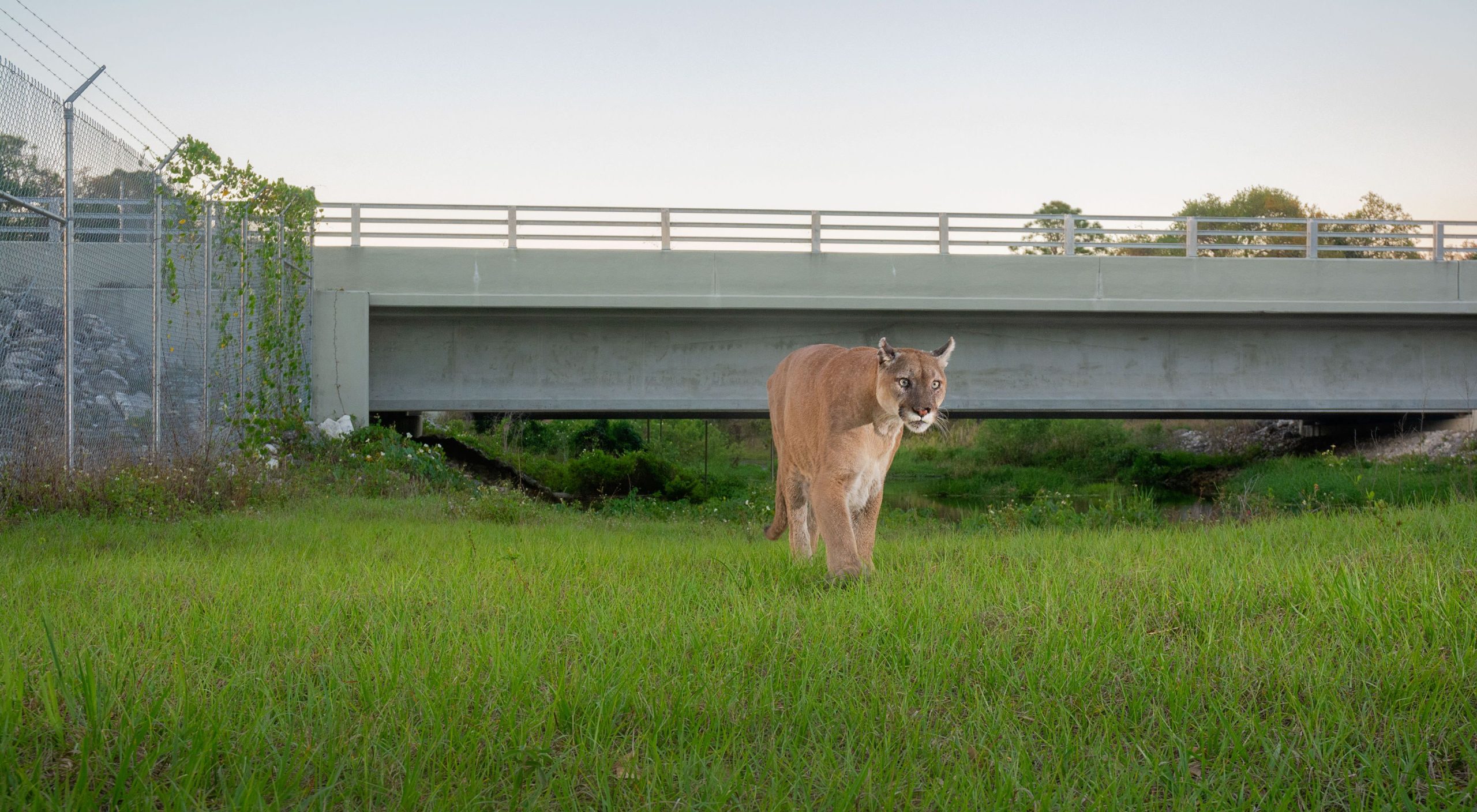
Predicting Florida Panther Movements and Potential Road Crossing Locations within South-Central Florida
(Include introduction to the Predicting Florida Panther Movements and Potential Road Crossing Locations within South-Central Florida project)
Project Objective:
Identify potential pathways and corridors that panthers are likely to use under existing land cover/land use conditions from the current species core range to large habitat hubs north of Interstate 4. Predict panther movements and natural range expansion within the south-central Florida region and identify probable road crossing locations.
Methods:
We used Least Cost-Path (LCP) and -Corridor (LCC) functions in ESRIs ArcMap 10.8. 1) FWC Cooperative Land Cover and FWS 2012 Panther Habitat Assessment Methodology Classification was used to identify land cover type preferences for panthers. The original 192 land cover classes were consolidated into 17 classes closely corresponding to the FWS classification categories. 2) We selected 34 target areas within the Florida Ecological Greenways Network.
Results:
Overall, 86% of the predicted corridors overlap with existing conservation lands or the FEGN. The primary level corridors consist of 94% existing conservation lands or the FEGN. There were 236 road segments (potential conflicts) identified that intersect least cost paths and 227 bridges (crossing opportunities) within ½ mi. We found that 67% and 84% of panther and bear telemetry locations, respectively overlapped with the corridor results. Eighty-three percent of panther-vehicle collisions and 81% of confirmed panther sightings occurred within ½ mi of the corridor model results.


